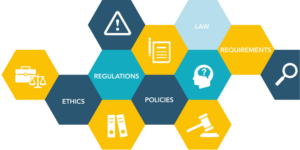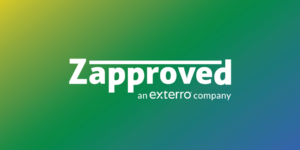Cloud computing has taken the software world by storm, so why hasn’t cloud computing ediscovery software become unanimous? The cloud has completely changed the way we create, share and interact with data. It’s also the preferred functionality for almost every major tech company across the globe at this point. The plethora of companies built on the cloud also adds to the ever growing volumes of data that are being stored in more places, increasing the economy of cloud computing which then drives down the cost of data storage, making it that much more appealing.
This blog will break down what the cloud is, the origins of cloud computing in ediscovery and set the stage for how cloud computing ediscovery software offers huge advantages to corporate legal teams.
What is the Cloud?
The cloud describes a global network of computers and servers that store and process data. Data and software in the cloud are located on physical servers — at least one, but usually more — somewhere in the world. Generally, these servers are redundant and geographically dispersed so that a catastrophe in one location can be compensated for by servers in another location.
Most ediscovery services are now cloud-based, as are social media sites like Facebook, Twitter, and Instagram and applications like Google Drive, Dropbox, and Microsoft OneDrive. Many software applications are no longer available for local installation, as they have been replaced by cloud-based software-as-a-service (SaaS) versions.
Data and software within the cloud can be accessed through web browsers or dedicated applications from any device with an authorized internet connection. While this means that data is accessible from practically anywhere, it also means that data could be entirely unavailable in the event of a massive power outage or other internet disruption.
What Are The Alternatives To Cloud Computing Ediscovery
In the early days of ediscovery software, there was no cloud! Initial software packages were all locally installed at a company’s physical location. Some were buildouts of existing litigation management systems, while others offered dedicated ediscovery tools. As cloud computing ediscovery has grown in popularity — and in reliability and security — the ediscovery software industry has largely converted to the cloud, though on-premise systems retain a small, dedicated following.
On-premise applications fall into two major categories: legacy review systems like Concordance and Summation and modern ediscovery packages like Relativity (also available in a cloud-based version). These systems are installed entirely in house, which means that the company’s IT team is responsible for not only the software but also all of the supporting hardware, system security, maintenance, and upgrades.
4 Reasons Cloud Computing Ediscovery Makes Sense
1. Scalability
The cloud offers businesses infinite scalability to quickly add more computing resources to meet computing demand. When demand is unpredictable, the cloud provides elasticity so that teams can turn the computing power on and off easily. This gives corporate legal teams the flexibility to always be ready for any size task that comes. With cloud computing businesses no longer have to guess how much capacity they’ll use and they don’t have to invest in expensive infrastructure, nor the ongoing maintenance of systems that may go unused.
2. Accessibility
The workforce is becoming increasingly more dispersed as more businesses are giving employees the choice to work at least partially from home or other remote locations. According to a recent study, 25% of all professional jobs in North America will be remote by the end of 2022. The cloud offers businesses the ability to provide greater accessibility to both the data and the applications used to run their business from anywhere and from any device. With cloud-based ediscovery software any employee or user with a login and an Internet connection can securely access the information they need from around the globe. The accessibility that the cloud provides not only fuels access to tools for basic job performance, but also facilitates collaboration. With cloud computing ediscovery teams can work together on documents and collaborate on projects affordably and efficiently.
3. Affordability
Because the usage from hundreds of thousands of customers is aggregated in the cloud, customers benefit from the economies of scale which translates into lower pay-as-you-go prices. Companies can achieve a lower variable cost than what would be achievable on their own. Because of the pay-for-use model, capital expenditure is erased. Additionally, since it is much faster to deploy cloud computing, businesses experience minimal start-up costs and enjoy predictable ongoing operating expenses.
4. Security
Cloud computing is a multibillion-dollar business. Cloud providers such as Amazon Web Services or Microsoft Azure know that the success of their business is based in large part on their ability to keep customers’ data secure. The standards cloud providers adhere to are designed with that in mind and they invest heavily in security. Because the public cloud is a shared resource, companies benefit from layers of data security that are stronger than what organizations could implement on their own. Of course, security is more than just physical, it is also important to have solid security protocols for users who access the system and limit access with profile settings according to the access required.
Choosing Which Ediscovery Software Option is Best For Your Team
Whether your company would do best with an on-premise or cloud-based ediscovery system is an individual decision that depends on your specific circumstances. Companies that have outstanding enterprise security measures and robust IT departments and that are embroiled in continuous, fairly predictable litigation might do well to manage their ediscovery systems through an on-premise installation. Globally distributed organizations or those that allow remote employment and that have a lower-volume, variable ediscovery case load may prefer the lower cost, greater convenience, and “one-stop shopping” that on-demand ediscovery software allows.
Give careful thought to which camp you fall into. This decision is best made with a team from the legal, finance, and IT departments. Work together to evaluate your options and price out all of the up-front, ongoing, and hidden costs. Not only will you get more complete and accurate information if you start with everyone at the table, but your credibility and buy-in with corporate management will be immediately enhanced if your departments present a unified front.




